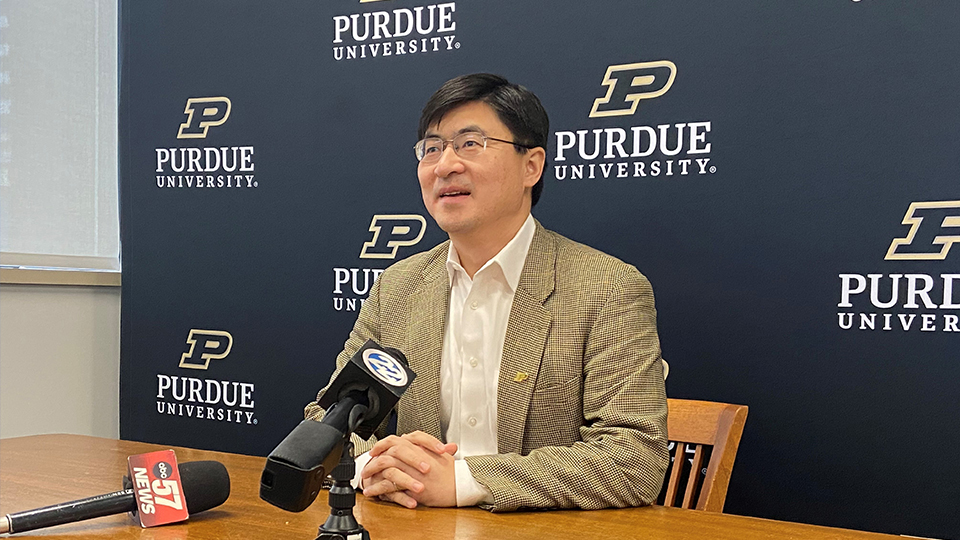Purdue launches broadband team to improve understanding of Indiana internet speeds
Subscriber Benefit
As a subscriber you can listen to articles at work, in the car, or while you work out. Subscribe Now
Purdue University is ramping up efforts to help Indiana better understand its digital divide.
A new Purdue Broadband Team, announced Monday, will work with local communities across Indiana to determine where better broadband access is needed and what tools residents and businesses need to deploy internet services.
The team will be composed of members of Purdue Extension, 4-H, the Purdue Center for Regional Development and the Purdue for Life Foundation working alongside members of the Indiana Broadband Office and the Indiana Office of Community and Rural Affairs.
It comes as state officials plan how to spend $868 million in federal funding from the Broadband Equity, Access, and Deployment (BEAD) Program for high-speed internet improvements.
“Access to fast, reliable internet is a major contributor to quality of life and is one of the great equalizers in today’s society,” Lt. Gov. Suzanne Crouch said in a Purdue news release. “I am confident that this partnership with Purdue will accelerate state efforts to ensure that all Hoosiers, in every community, will have broadband access.”
Purdue President Mung Chiang discussed the goals of the new team on a Monday afternoon stop in St. Joseph County as a part of a 92-county tour.
President Mung Chiang describes the goals of the new Purdue Broadband Team.
The Purdue Broadband Team will be led by Roberto Gallardo of the Purdue Center for Regional Development. The team’s work will emphasize education and data collection.
At a community level, members of the Purdue Broadband Team will help Hoosiers conduct internet speed tests, train residents on digital literacy and support local broadband task forces. The Purdue team will also contribute to broadband mapping efforts which could help state officials better understand at a local level where broadband access is needed or where faster connections could be beneficial.
The Purdue Broadband Team’s mapping efforts will largely be driven by self-reported data about internet speeds. Purdue’s team plans to leverage the resources of more than 250 Extension employees and 70,000 4-H participants to spread word about how to report data to support tools like the Federal Communication Commission’s Broadband Map.
Though Purdue will have no say in how the state chooses to use its $868 million of federal broadband funds, Gallardo says the university plans to share its data in hopes of increasing state officials’ understanding of where investments are needed.
“We want the state to have as much data as possible as they continue to work on this issue,” Gallardo said, “And where else to get it (but) from a trusted source, that’s Extension.”
Chiang discusses the need for quality internet in Indiana communities.
The team is not working under a specific deadline, though Chiang said sooner is better than later, joking that basketball season is a good season for checking internet speeds.
The Purdue president said the effects of strong internet can be felt across a community, from its ability to support e-learning days for schools to the vital resources provided via telemedicine, especially in small, rural areas that may not be able to support a large, physical health care presence.
“It’s like electricity 100 years ago,” Chiang said. “It’s the foundation for our future, the foundation for growth, prosperity and quality of life, and now is the best time because there’s federal and state resources coming. ”
The Indiana Broadband Office has posted to its website an initial plan proposed for how to spend BEAD Program funds. The proposal is available for public comment through Nov. 6.
